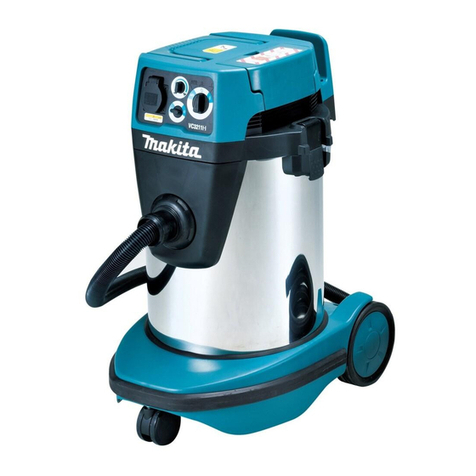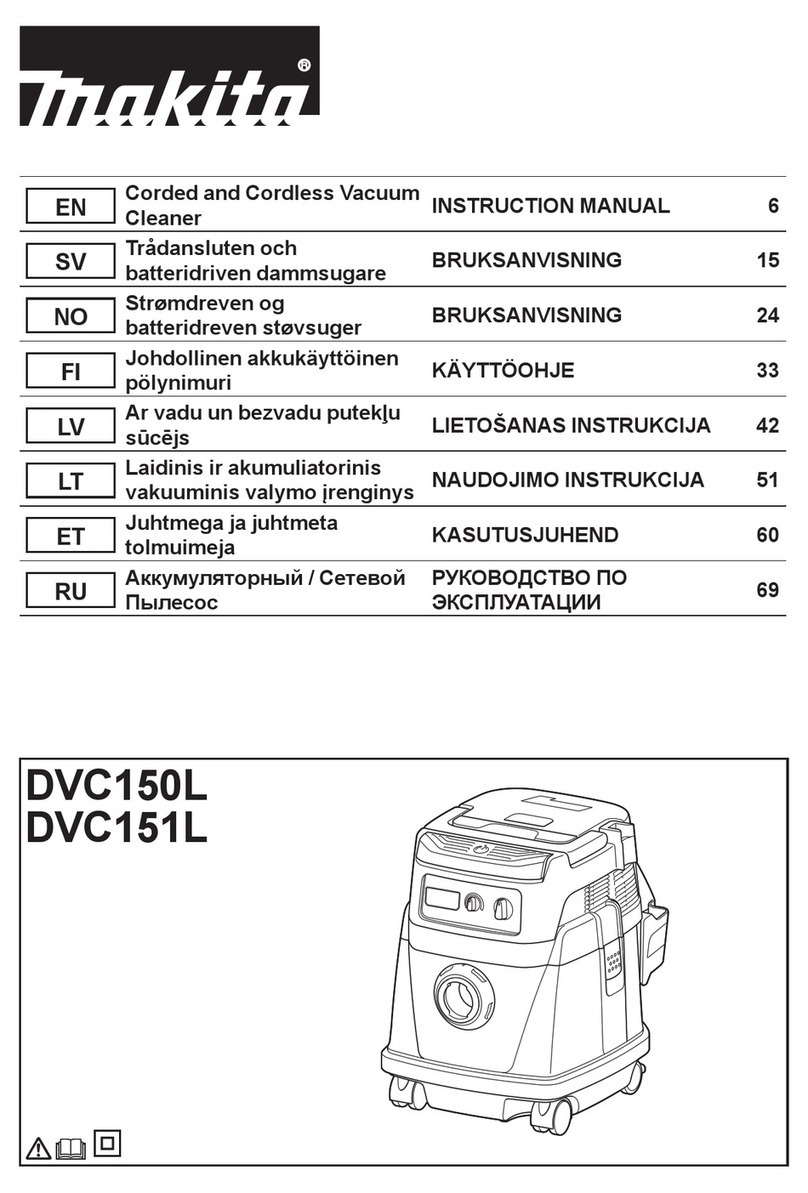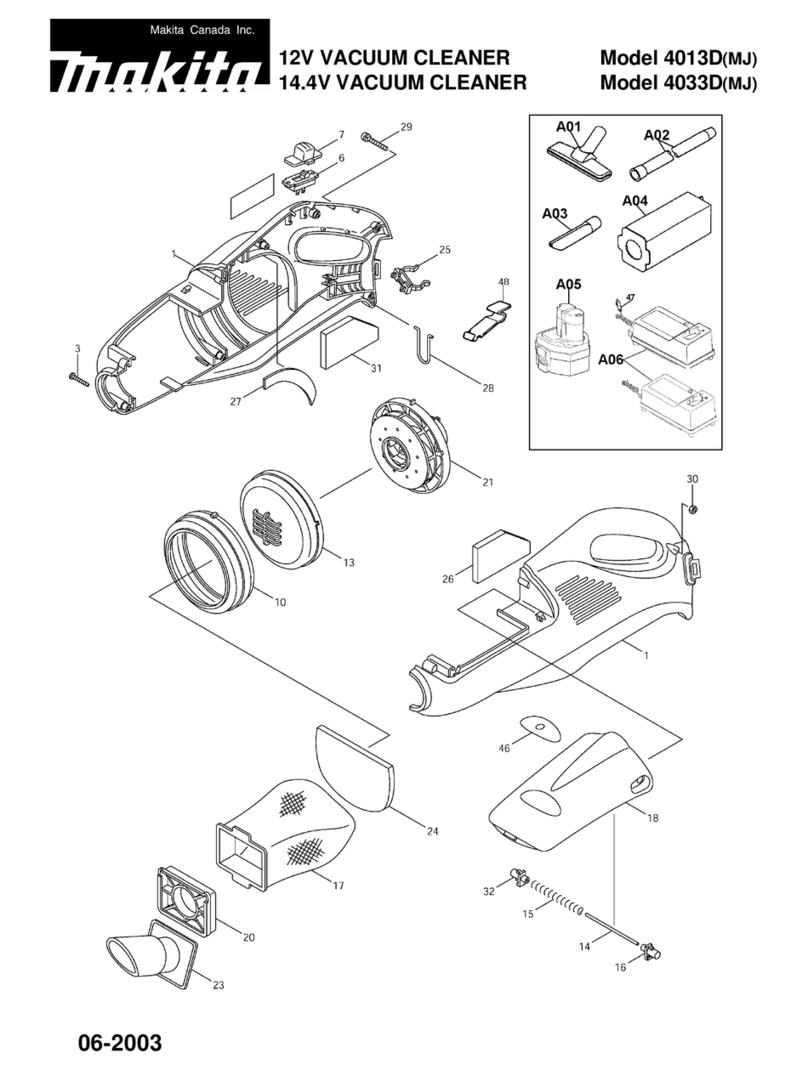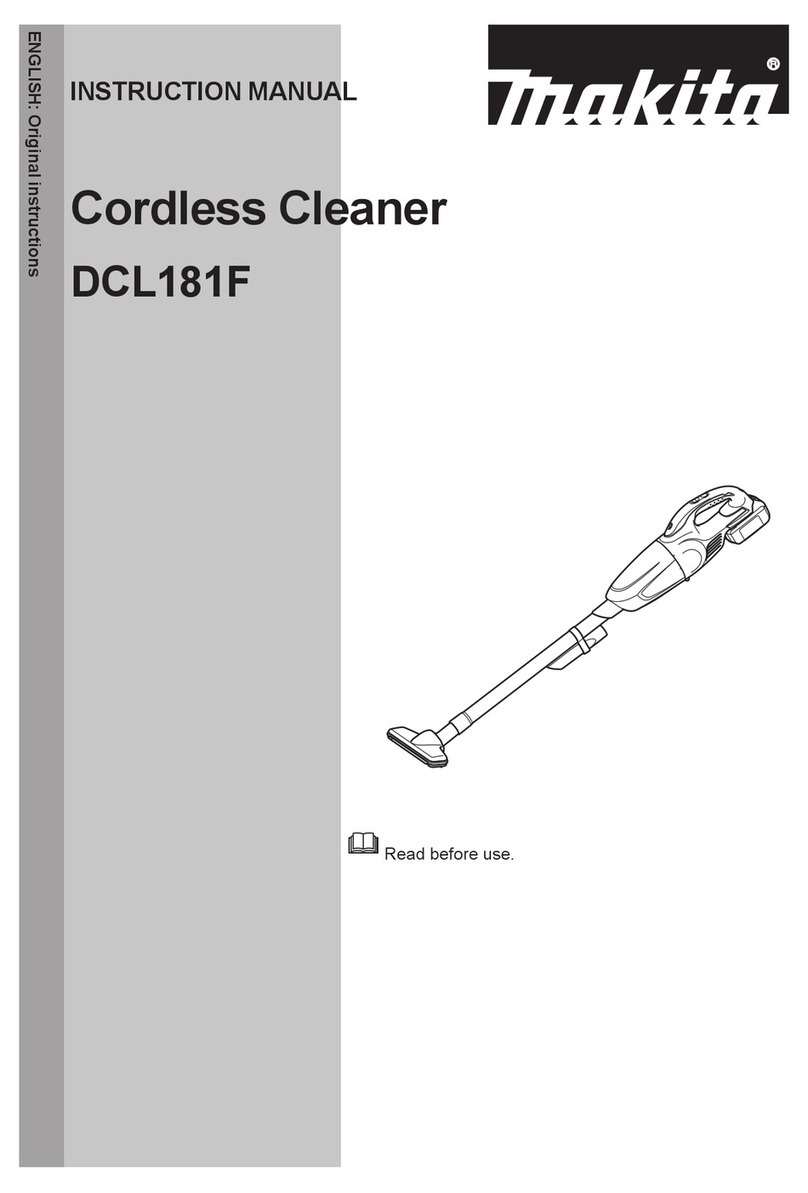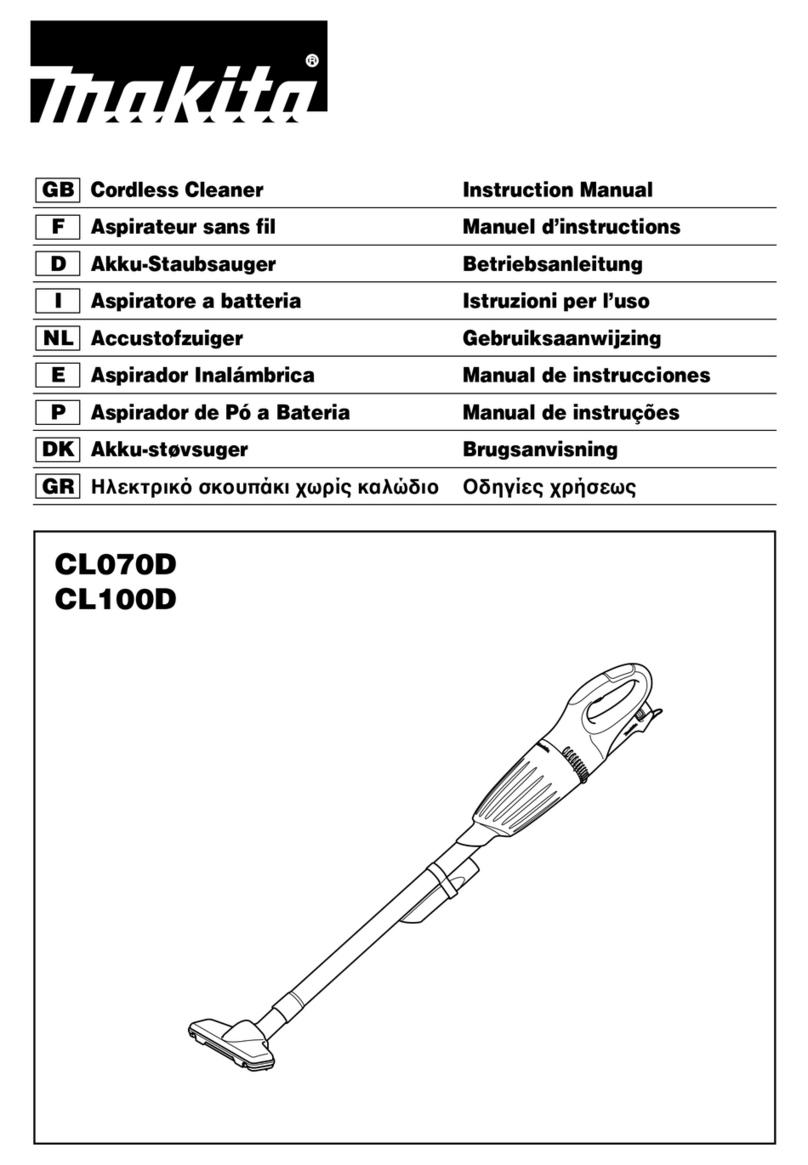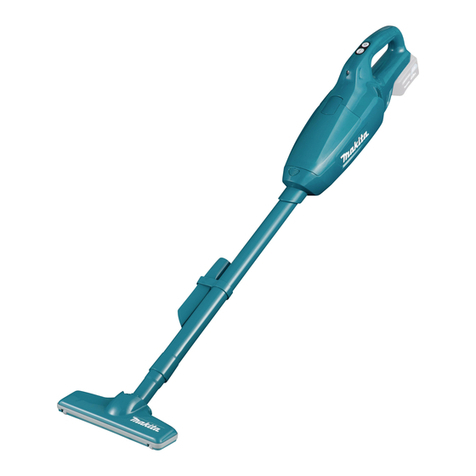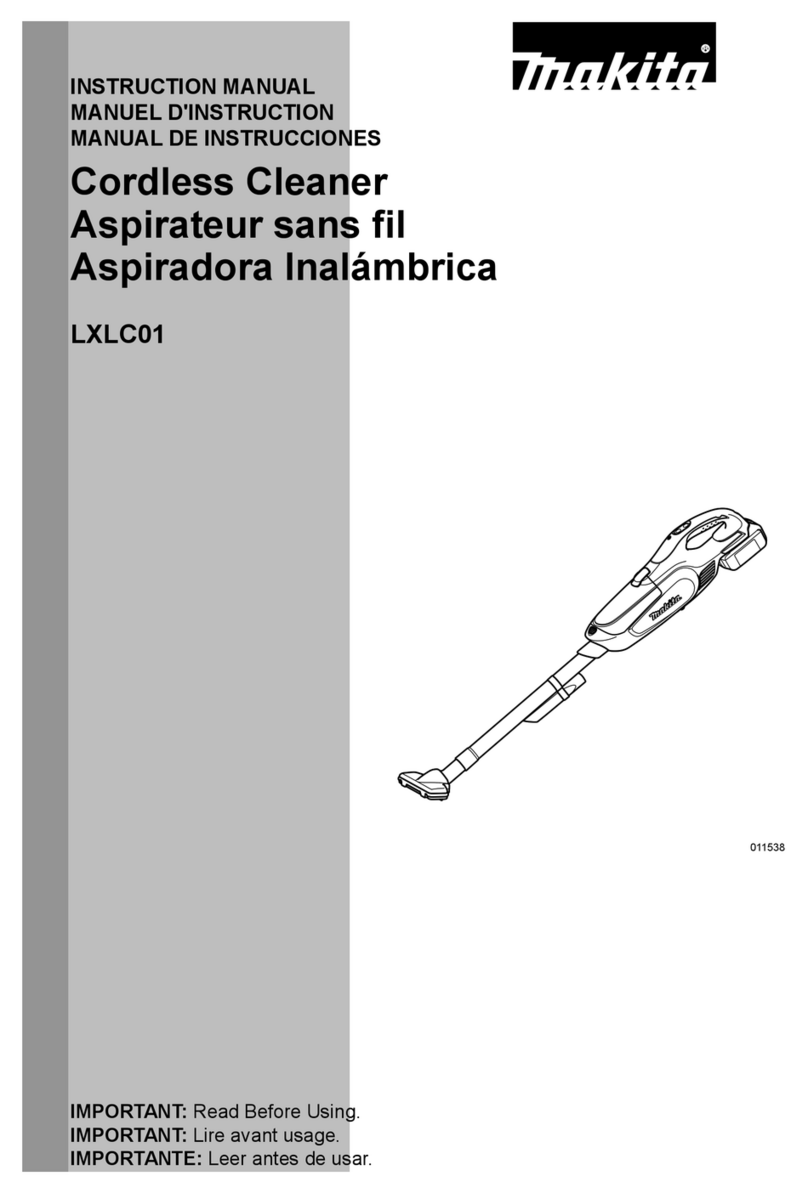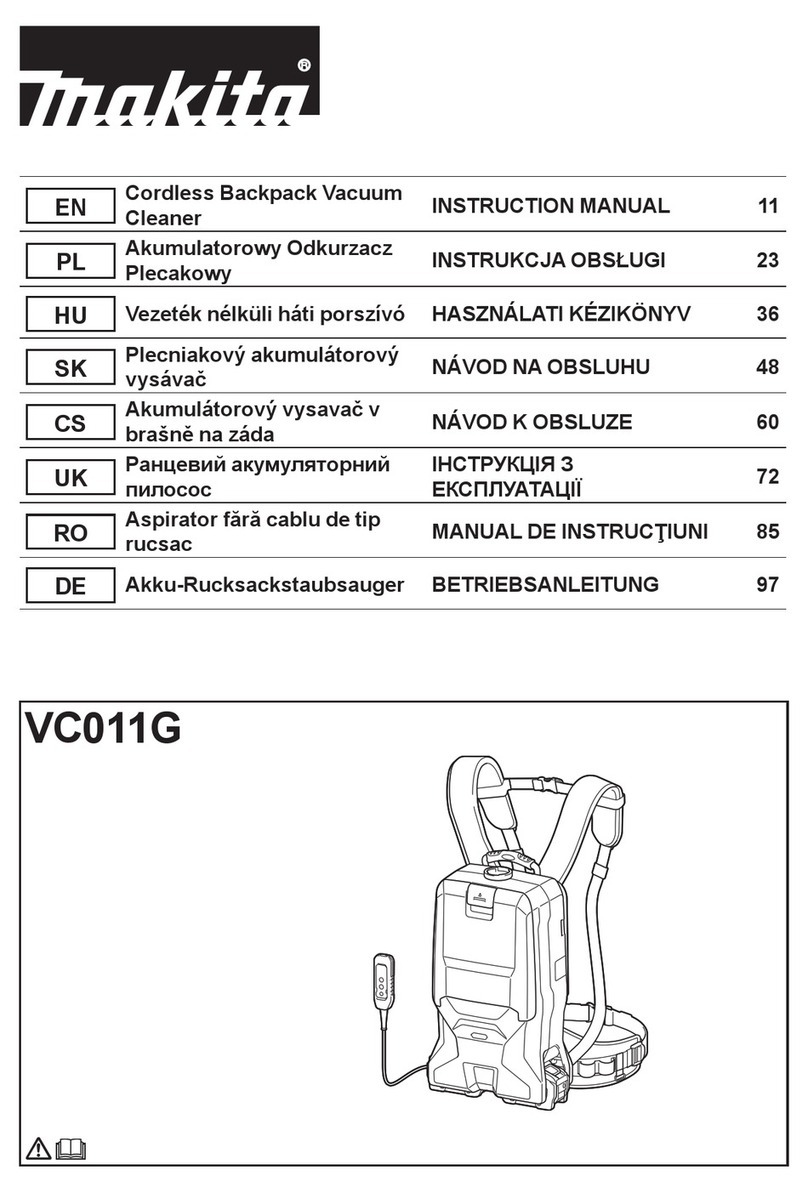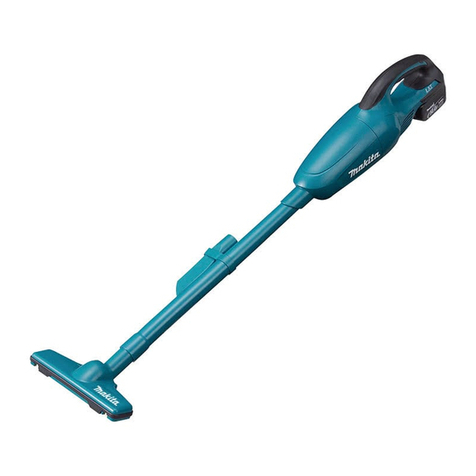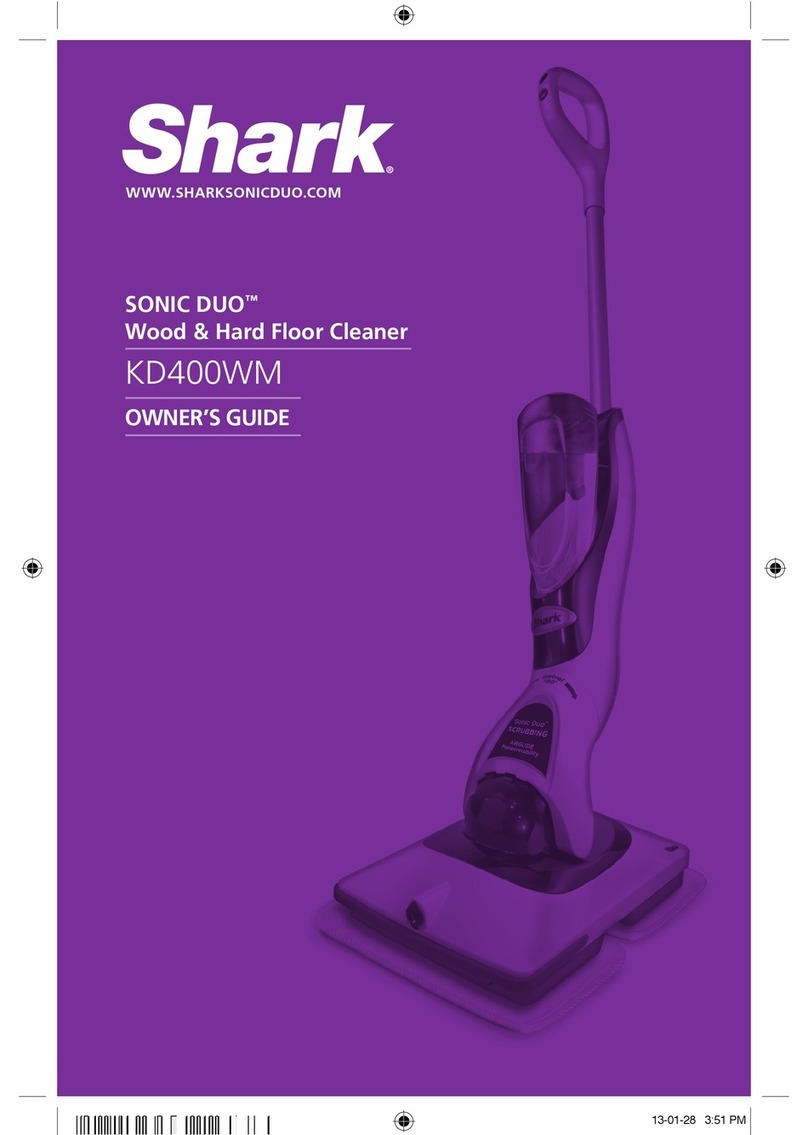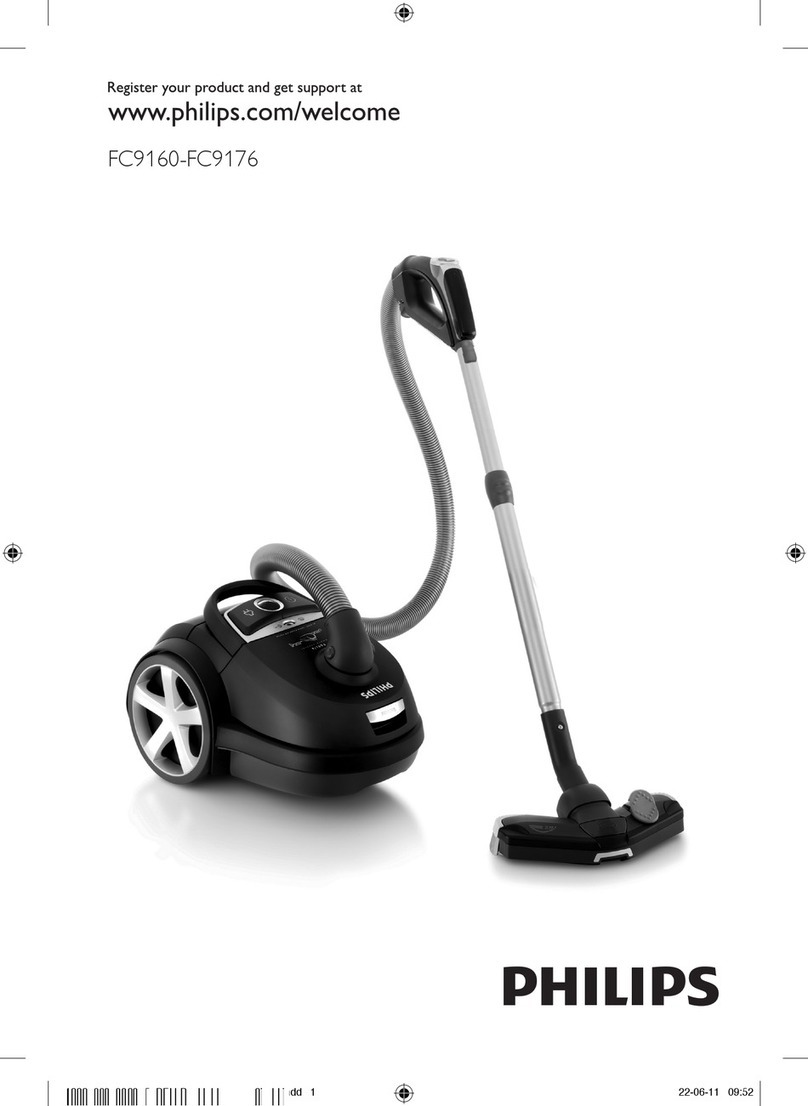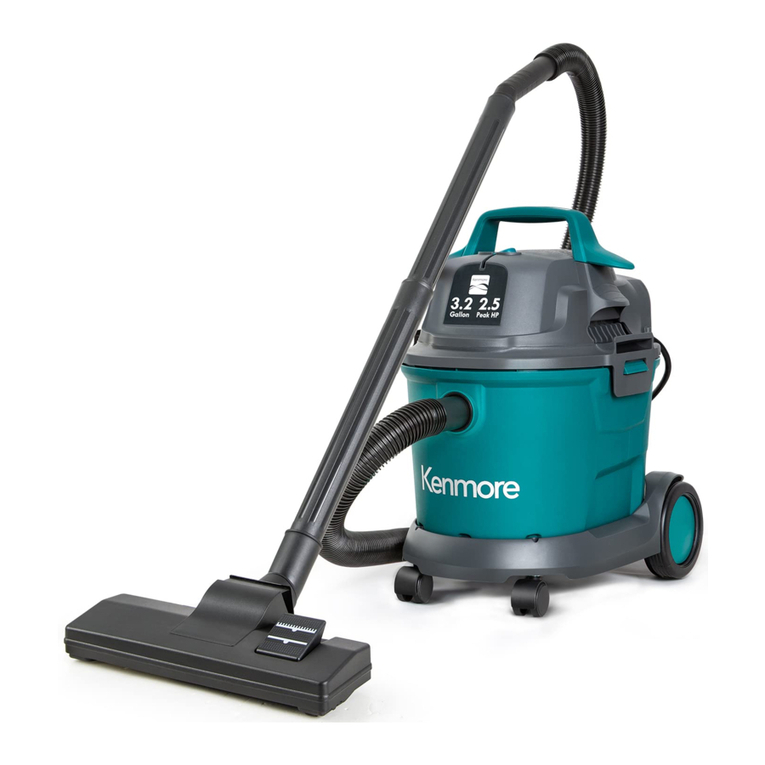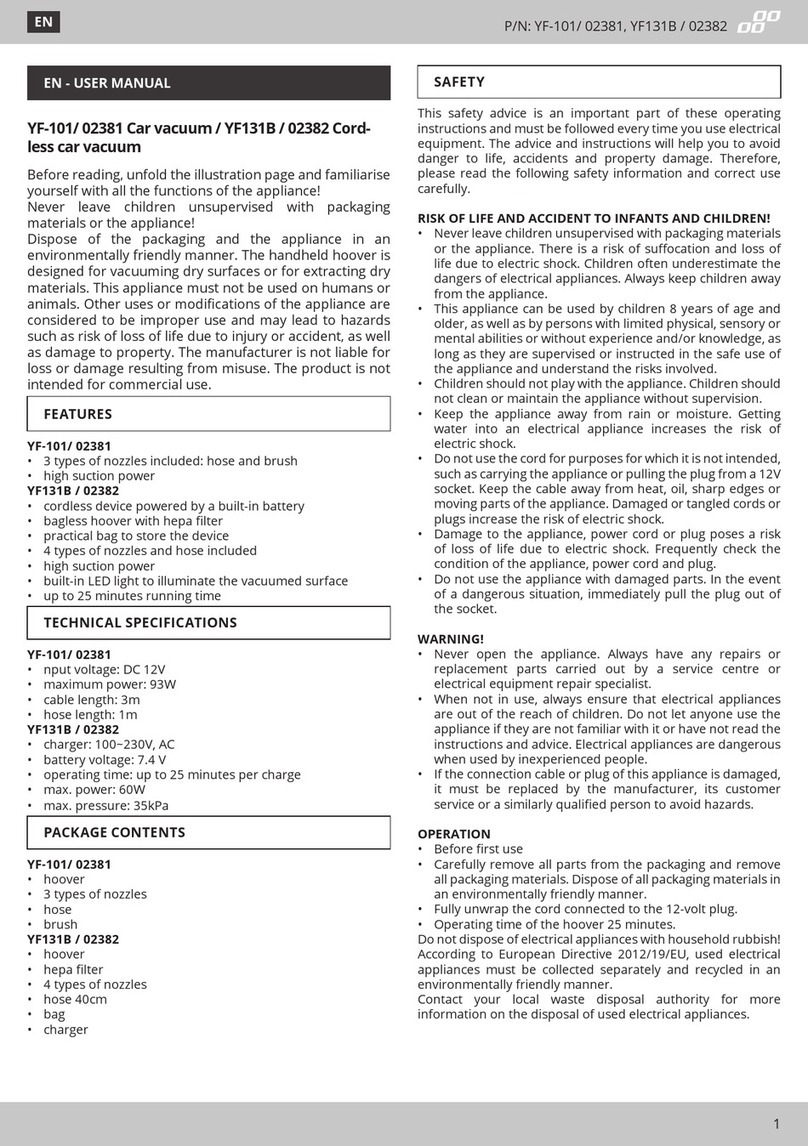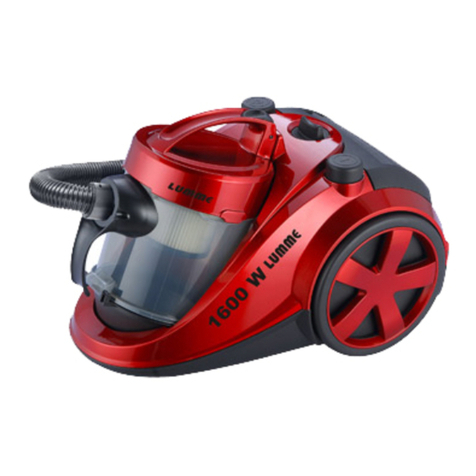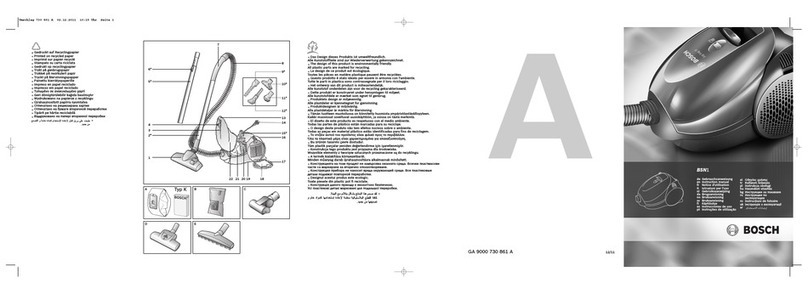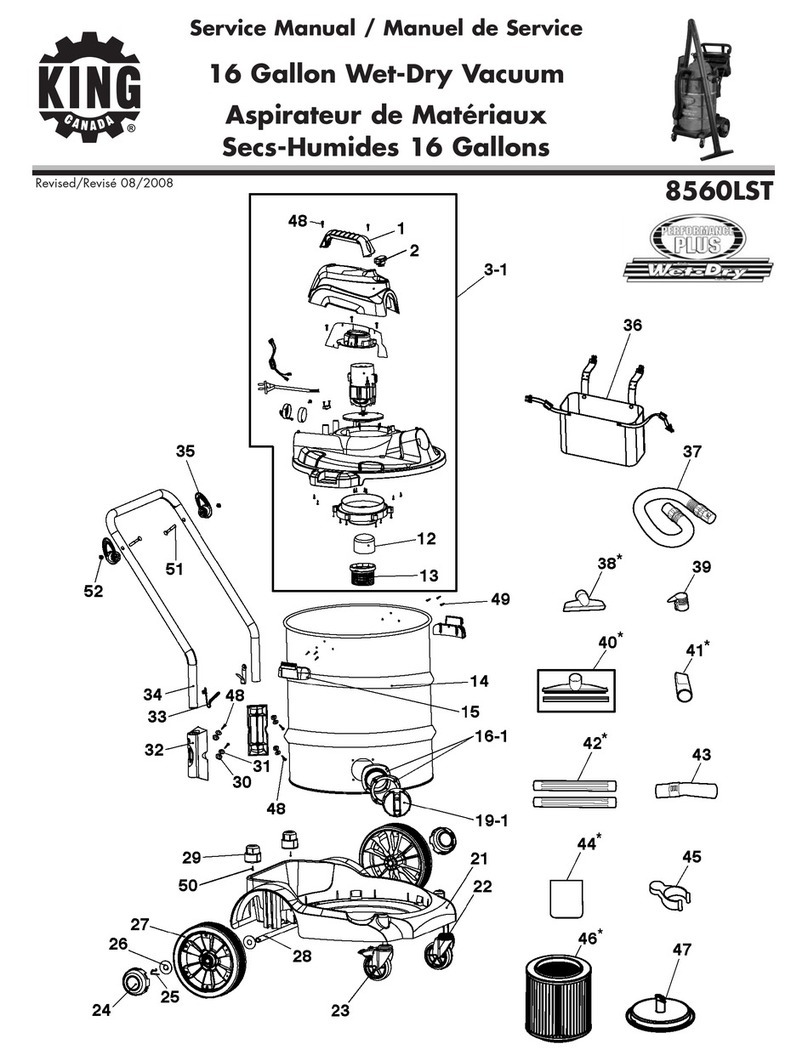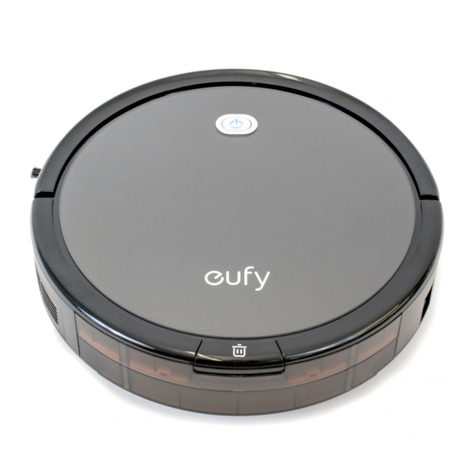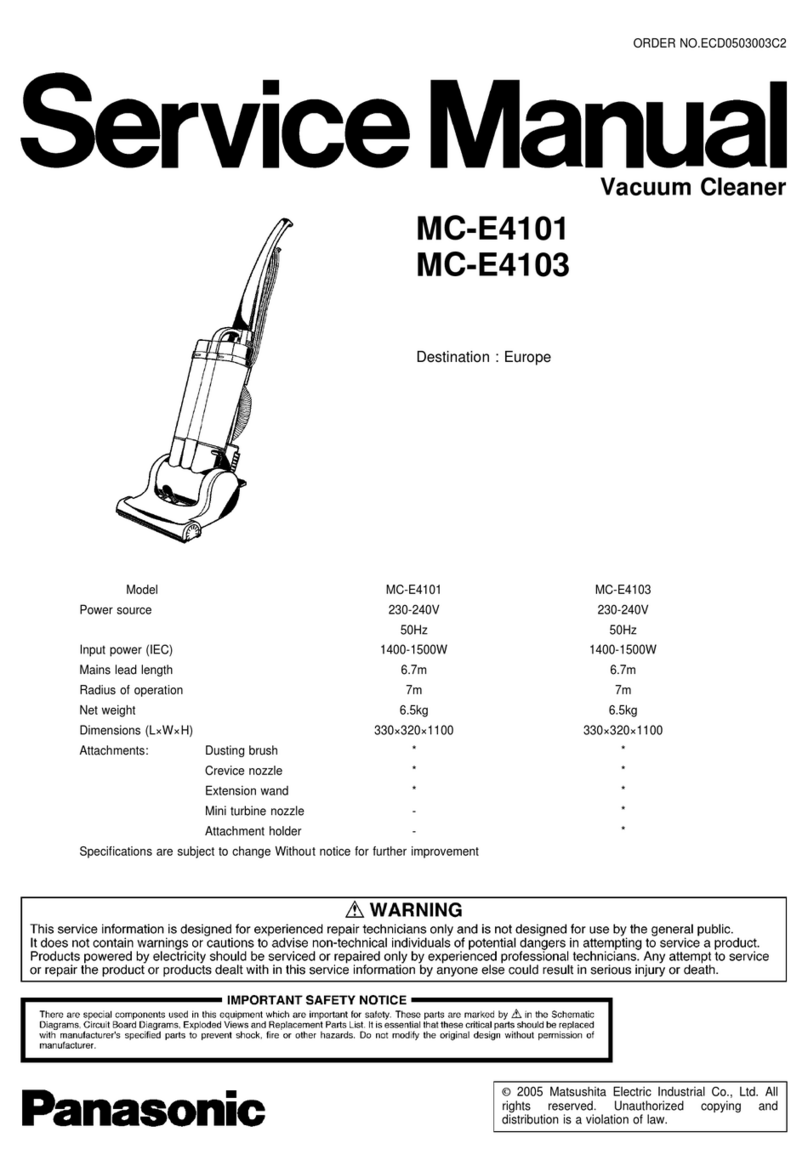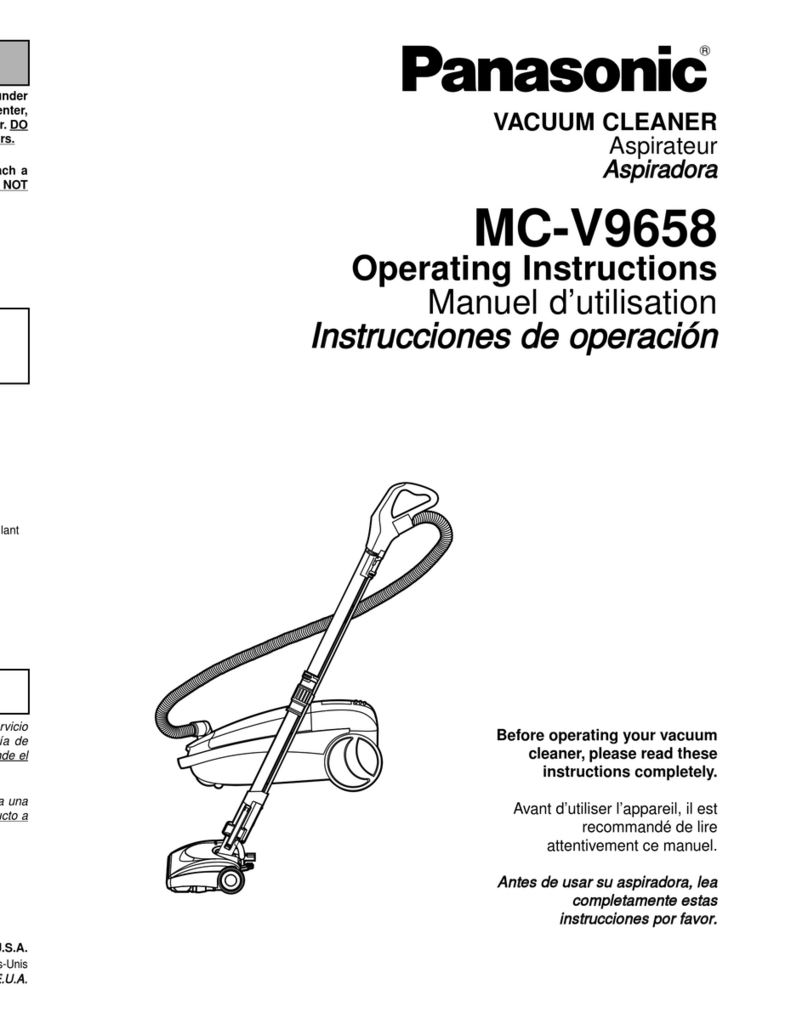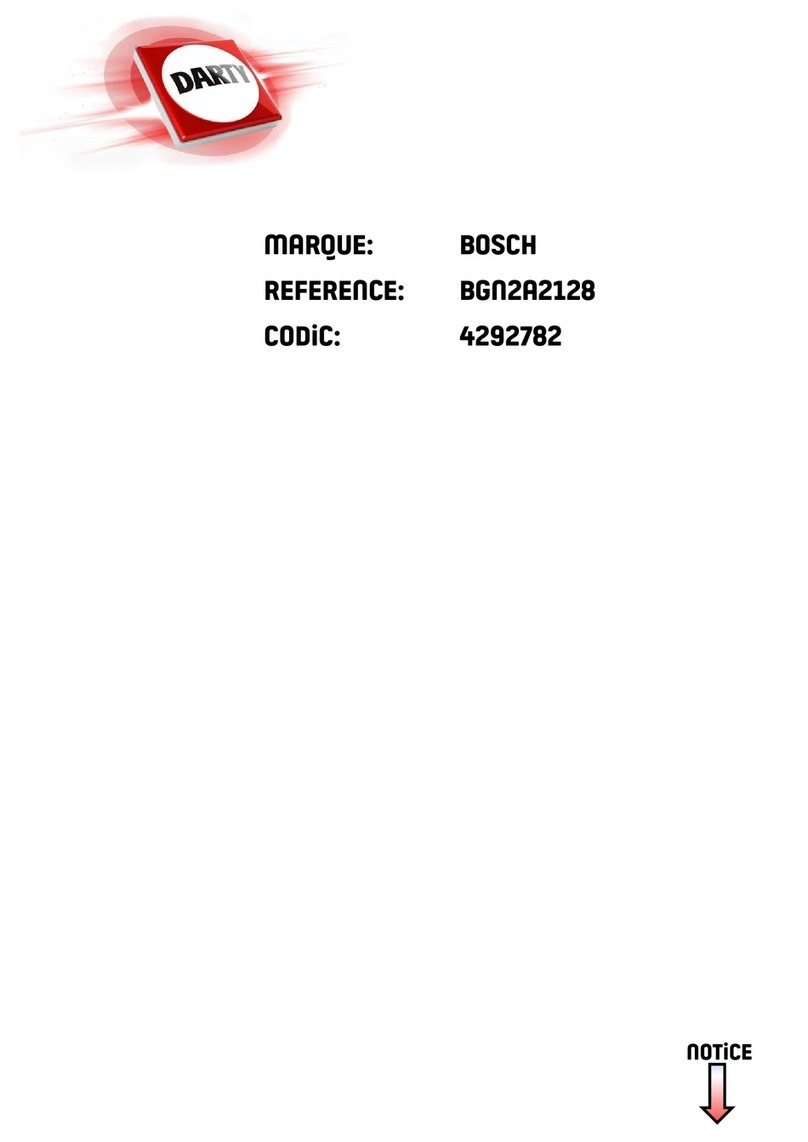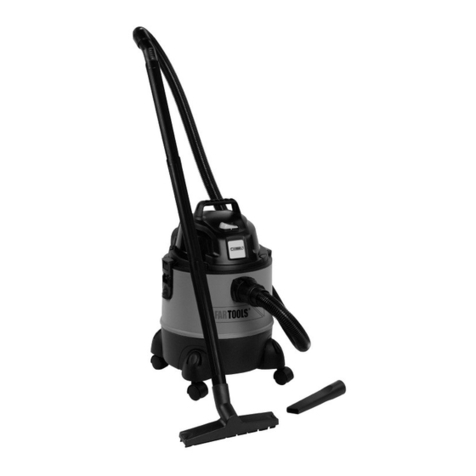
8ENGLISH
1. Before use, make sure that this cleaner must
be used by people who have been adequately
instructed on the use of this cleaner.
2.
If foam/liquid comes out, switch off immediately.
3. Clean the water level limiting device regularly
and examine it for signs of damage.
4. Do not use the cleaner without the lter.
Replace a damaged lter immediately.
5. USE OF EXTENSION CORD. When using an
extension cord because of the great distance
to your power source, try to employ a cord that
is sufciently thick but not too long, or cleaner
performance will be adversely affected. For
outdoor applications use an extension cord
suitable for outdoor use.
6. VOLTAGE WARNING: Before connecting the
cleaner to a power source (receptacle, outlet,
etc.) be sure the voltage supplied is the same
as that specied on the nameplate of the
cleaner. A power source with voltage greater
than that specied for the cleaner can result
in SERIOUS INJURY to the operator as well
as damage to the cleaner. If in doubt, DO NOT
PLUG IN THE CLEANER. Using a power source
with voltage less than the nameplate rating is
harmful to the motor.
7. AVOID UNINTENTIONAL STARTING. Be sure
switch is OFF when plugging in.
8. Do not attempt to pick up ammable materials,
re works, lighted cigarettes, hot ashes, hot
metal chips, sharp materials such as razors,
needles, broken glass or the like.
9.
NEVER USE THE CLEANER IN THE VICINITY
OF GASOLINE, GAS, PAINT, ADHESIVES OR
OTHER HIGHLY EXPLOSIVE SUBSTANCES.
The switch emits sparks when turned ON and
OFF. And so does the motor commutator during
operation. A dangerous explosion may result.
10.
Never vacuum up toxic, carcinogenic, com-
bustible or other hazardous materials such as
asbestos, arsenic, barium, beryllium, lead, pes-
ticides, or other health endangering materials.
11. Never use the cleaner outdoors in the rain.
12. Do not use close to heat sources (stoves, etc.).
13. GUARD AGAINST ELECTRIC SHOCK. Prevent
body contact with grounded surfaces. For
example; pipes, radiators, ranges, refrigerator
enclosures.
14. Do not block cooling vents. These vents per-
mit cooling of the motor. Blockage should be
carefully avoided otherwise the motor will burn
out from lack of ventilation.
15. Keep proper footing and balance at all times.
16. DO NOT ABUSE CORD. Never carry the cleaner
by cord or yank it to disconnect from recepta-
cle. Keep cord away from heat, oil, and sharp
edges. Inspect cleaner cords periodically and
if damaged, have repaired by authorized ser-
vice facility. Inspect extension cords periodi-
cally and replace if damaged.
17. Do not fold, tug or step on the hose.
18. Stop the cleaner immediately if you notice
poor performance or anything abnormal
during operation.
19. DISCONNECT THE CLEANER. When not in
use, before servicing, and when changing
accessories.
20. Clean and service the cleaner immediately
after each use to keep it in tiptop operating
condition.
21. MAINTAIN THE CLEANER WITH CARE. Keep
the cleaner clean for better and safer per-
formance. Follow instructions for changing
accessories. Keep handles dry, clean, and free
from oil and grease.
22. CHECK DAMAGED PARTS. Before further use
of the cleaner, a guard or other part that is
damaged should be carefully checked to deter-
mine that it will operate properly and perform
its intended function. Check for alignment of
moving parts, binding of moving parts, break-
age of parts, mounting, and any other condi-
tions that may affect its operation. A guard or
other part that is damaged should be properly
repaired or replaced by an authorized service
center unless otherwise indicated elsewhere
in this instruction manual. Have defective
switches replaced by authorized service cen-
ter. Don’t use the cleaner if switch does not
turn it on and off.
23. REPLACEMENT PARTS. When servicing, use
only identical replacement parts.
24. STORE IDLE CLEANER. When not in use, the
cleaner should be stored indoors.
25. Wet lters and the interior part of the liquid
container shall be dried before storage.
26. Be kind to your cleaner. Rough handling can
cause breakage of even the most sturdily built
cleaner.
27. Do not attempt to clean the exterior or interior
with benzine, thinner or cleaning chemicals.
Cracks and discoloration may be caused.
28. Do not use cleaner in an enclosed space where
ammable, explosive or toxic vapors are given
off by oil-base paint, paint-thinner, gasoline,
some mothproong substances, etc., or in
areas where ammable dust is present.
29. Do not leave the cleaner cord lying on the oor
after you have nished a cleaning job. It can
become a tripping hazard or may cause dam-
age to the cleaner.
30. Do not operate this or any tool while under the
inuence of drugs or alcohol.
31. As a basic rule of safety, use safety goggles or
safety glasses with side shields.
32. Use a dust mask in dusty work conditions.
33. This machine is not intended for use by per-
sons including children with reduced physical,
sensory or mental capabilities, or lack of expe-
rience and knowledge.
34. Young children should be supervised to
ensure that they do not play with the cleaner.
35. Never handle plug cord or cleaner with wet
hands.
36. Use extreme caution when cleaning on stairs.
37. Do not use the cleaner as a stool or work
bench. The machine may fall down and may
result in personal injury.
